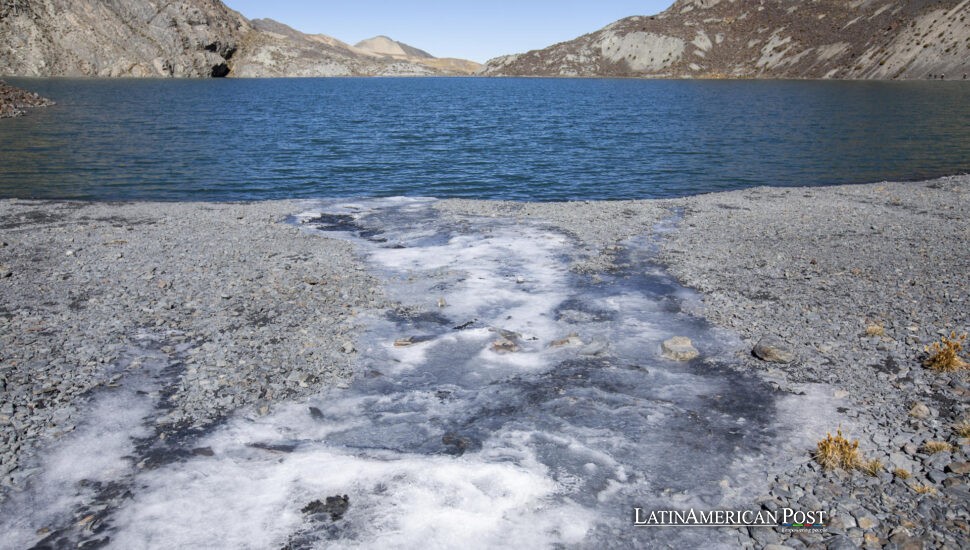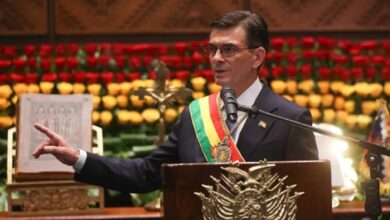Bolivia’s Ventanani Glacier Trek Dazzles Hikers as Climate Clock Ticks

Every winter, thousands of travelers lace up their boots in La Paz and head for Ventanani, a turquoise lagoon frozen nearly 17,000 feet up in Bolivia’s Cordillera Real. The view is breathtaking, but scientists say the glacier feeding it may vanish within decades.
The Climb Begins: From Capital Streets to Thin Air
The road to Ventanani begins with a jolt, out of the noise and altitude of La Paz and up a winding, oxygen-thinning drive toward the Tuni–Condoriri National Park. After 90 minutes, the car doors open at 15,400 feet. That’s where the real journey starts.
Yoel Paredes, a veteran mountain guide, waits by the ranger station, checking oxygen levels and offering calm reminders to cocky newcomers. “Even the fittest hikers hit a wall near the top,” he told EFE, nodding toward the final climb: a mess of loose stone where every step forward slips half a step back.
The four-kilometer trek weaves past Jurikhota Lagoon, its waters glassy and cold, then skirts the icy flows of Lake Slovenia, fed by dawn melt. But the prize—what everyone comes for—is higher still: Ventanani Lagoon, perched at 5,080 meters (16,666 feet) and encircled by jagged, snow-draped peaks. Cabeza del Cóndor, or “Condor’s Head,” scrapes the sky at over 18,500 feet.
It’s a sacred view. But the holy, here, is slipping.
Hiking the Bones of an Ice Age
The postcard beauty of Ventanani hides a disquieting truth. Bolivia has lost more than half its glacier cover since the 1970s, according to glaciologists at the Universidad Mayor de San Andrés (UMSA). The Cordillera Real is now shedding close to a vertical meter of ice every month—revealing ancient rock not seen since before the Inca built their empire.
“Ventanani is both a tourist destination and a warning sign,” writes UMSA geographer Carmen Galindo in a recent study on Andean water systems. In the winter, the lagoon’s surface freezes solid. In summer, it thins until it cracks open with sudden, sharp cracks that echo across the mountains like rifle fire.
Paredes has learned to read the mountain’s moods. He won’t take groups up in January anymore. “The rain makes the trail collapse,” he said. “It’s ankle-deep mud, and the rocks come down fast. They slice through tent canvas like it’s paper.”
That danger is becoming more frequent, not less.

A Vanishing Habitat’s Final Performance
The stillness is cinematic if you arrive early enough—before the sun crests the ridge. On clear days, Andean condors, Bolivia’s national symbol, glide above the peaks without flapping, riding invisible thermal drafts. Their wings stretch nearly ten feet across.
“Two active nests near the lagoon,” Paredes says, lowering his voice. He won’t share their exact location. “Some people care more about selfies than the birds.”
The condors’ presence is more than majestic. It’s a barometer of ecosystem health, says zoologist Diego Arduz of the Universidad Católica Boliviana. The birds rely on herds of camelids—llamas and alpacas—that graze below. Those animals, in turn, need glacial melt to nourish the grasses. As the ice disappears, the whole food web moves uphill until no “up” is left.
And yet, for now, the spectacle holds. Sunbeams slice through ice caves. Stalactites shatter like glass. The lagoon’s frozen crust splits into drifting rafts, each a shade of impossible blue.
It’s beautiful. And finite.
Tourism at the Edge of Collapse
For Bolivia, high-altitude tourism has become more than a novelty—it’s part of the economic plan.
A 2024 report from the Andean Development Corporation estimates that glacier treks and mountain excursions generate around $40 million a year. That may seem modest on a national scale, but it’s essential for Aymara villages that provide homestays, meals, and muleteers.
The catch? The glaciers are the attraction.
According to the UN Food and Agriculture Organization, some Andean ice caps could be nearly gone in twenty years if current melt rates continue. That wouldn’t just crush tourism—it would cripple La Paz and El Alto, home to almost 2 million people who rely on glacier-fed reservoirs during the dry season.
“We’re walking on our future drinking water,” Galindo tells her students. “And we’re walking fast.”
Back at the park gate, Paredes stamps permits and looks at the sky. He talks about the next generation and whether young guides will have jobs when the ice is gone.
Also Read: Brazil Races to Bring Blue-Eyed Doves Back from Oblivion
“If the glacier disappears, so do the tourists,” he says. Until then, he gives every group the exact instructions: step lightly, carry out your trash, and stop often enough to hear the glacier breathe.
Because someday, the silence might be all that’s left.




